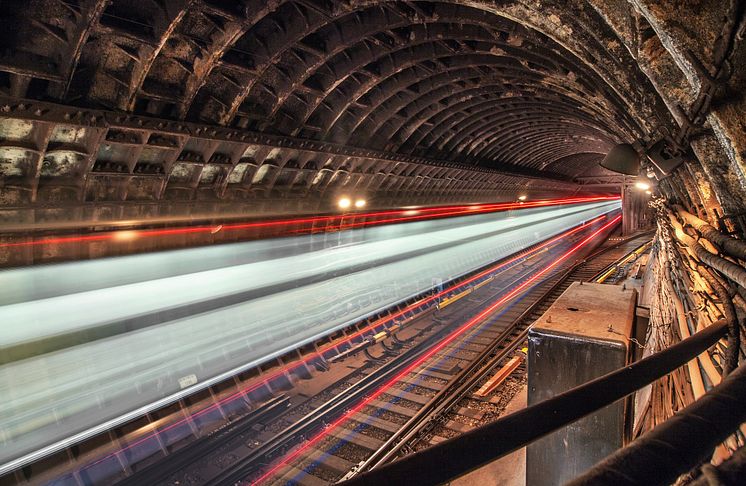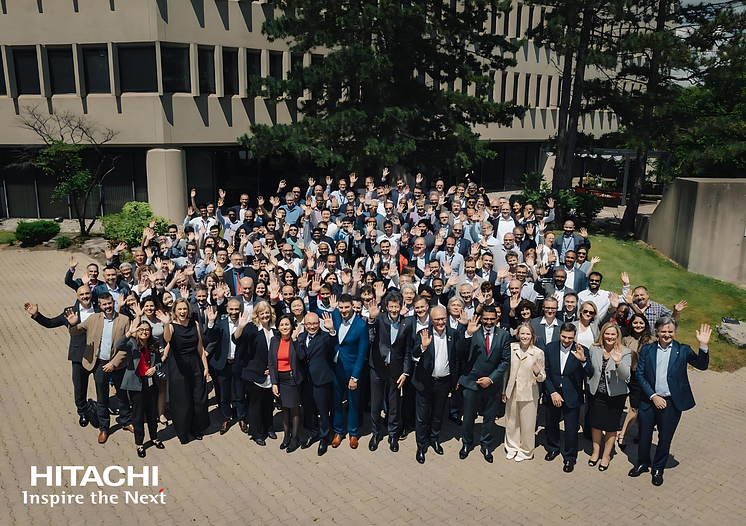
Press release -
“Can we make this quick?”, ask Toronto transit users
3 in 4 people say shorter journeys is the top priority for public transit in Toronto
To encourage more people to take transit – and avoid the road congestion that costs the region C$44.7 billion annually[i]- Torontians would most like to see ‘shorter journeys’ on public transit prioritised (72%), a global transportation survey revealed today.
Toronto is still a city dominated by car travel, with 70% of people commuting by car, compared to 33% in Paris and 41% in London. Prioritising shorter journeys (72%) came top of the wish list for people across Toronto, beating ‘avoiding crowding’ (69%), ‘reliability’ (65%), and ‘affordability’ (57%) as reasons to use transit more often.
The findings come as part of international report into attitudes to transportation commissioned by Hitachi Rail, a global leader in rail. The company has a large presence in Toronto with more than 1,200 employees working on major projects, like the Ontario Line, and delivering important urban rail resignalling projects across Canada and in major cities around the world.
The global research was conducted by independent polling agency Savanta, which collected the opinions of a representative sample of 1,026 Toronto residents who used all modes of transportation. Worldwide, more than 11,000 people were interviewed in seven global cities - London, Washington DC, Paris, Dubai, Copenhagen, Berlin and Toronto.
The focus on ‘shorter journeys’ has been a consistent theme for Toronto transit users, coming top for three years in a row, the data shows.
“Toronto resident expectations for transit continue to grow – and providing shorter journeys is top of their wishlist. They want transit to offer faster more convenient ways to cross the city as an alternative to driving”,said Arnaud Besse, Chief Operating Officer of Urban Rail Signalling at Hitachi Rail, speaking from Toronto.
“It falls on us as leaders in the rail industry to offer the advanced technology and deliver the important projects that can make journeys faster and make transit more appealing.”
A range of factors impact the length of journeys on subways and rail within cities. Core components of any transit systems are the capability, reliability and speed of the trains, signalling and infrastructure, while service frequency, the time it takes for passengers to board at stations and other operational factors all have an impact.
While transit and congestion are hot topics in the city, the good news for time-sensitive Toronto residents is that there is an unprecedented level of investment underway across the region that will cut journey times and make transit the logical choice.
The largest new project is the new Ontario Line, which will dramatically cut the length of transit journeys from 70 minutes to 30 minutes to get across the city. Its modern signalling technology will also allow trains to pass through stations every 90 seconds during rush hours.
In the shorter-term, programmes like the Finch LRT line and Hurontario LRT line (both supported by Hitachi Rail), and the regional GO Expansion, will cut transit journey times, increase travel options and connections, and improve reliability across the region. While upgrades to the TTC subway system, with the use of new signalling technology, will allow for faster journeys, more services and greater reliability, plus the ability to reach more destinations via transit.
Initiatives such as Ontario’s newly introduced One Fare Program - that enables transit users to pay just one fare across the region’s different transit organizations – has made transit more convenient, integrated and affordable. All aspects that transit users, and potential transit users, value according to the report.
Hitachi Rail’s survey also finds that there is support for better funding for public transit. People in Toronto would use a better connected system more, even if it cost more (40% in favour vs. 37% against), despite the majority of respondents using a car to commute to work or study (70%).
ENDS
Media Contacts
Adam Love Adam.love@hitachirail.com / +1 437 234 4024
Evelyn Mills emills@globalpublic.com / +1 437 446-8180
Notes to the editors:
Hitachi Rail’s Better Connected report is available here. For more detailed information specific to about the polling for Toronto, please reach out the media contact below.
To find images associated with the release please go here.
Hitachi Rail’s growing presence in Toronto includes:
- Its global competence centre for Urban Rail Signalling in North York from which it is delivering important urban rail signalling projects across Canada (Toronto, Vancouver, Montreal & Ottawa) and in major cities around the world.
- Delivering major projects like the Hurontario Line and Ontario Line. For the Ontario Line, as well as being the lead consortium partner, it will have a long-term involvement once the line is in service that will involve support for the operations and maintaining the trains at a newly built facility in Thorncliffe Park.
The global transportation attitudes survey was carried out by independent polling company, Savanta. 1,026 residents of Toronto were surveyed and people interviewed representative of the population in terms of age, gender and region. In the global survey, 11,162 respondents were interviewed around the world. This is the third year in a row that the research has been carried out.
Topics
Categories
About Hitachi Rail
Hitachi Rail is committed to driving the sustainable mobility transition and has a clear focus on partnering with customers to rethink mobility. Its mission is to help every passenger, customer and community enjoy the benefits of more connected, seamless and sustainable transport.
With revenues of over €7bn and 24,000 employees across more than 50 countries, Hitachi Rail is a trusted partner to the world’s best transport organisations. The company's reach is global, but the business is local - with success built on developing local talent and investing in people and communities.
Its international capabilities and expertise span every part of the urban, mainline and freight rail ecosystems – from high quality manufacturing and maintenance of rolling stock to secure digital signalling, smart operations and payment systems.
Hitachi Rail, famous for Japan's iconic high speed bullet train, draws on the digital and AI expertise of Hitachi Group companies to accelerate innovation and develop new technologies. Hitachi Group is present in 140 countries with over 270,000 employees and global revenues of €54.55bn / ¥8,564 bn.
For more information, visit hitachirail.com





